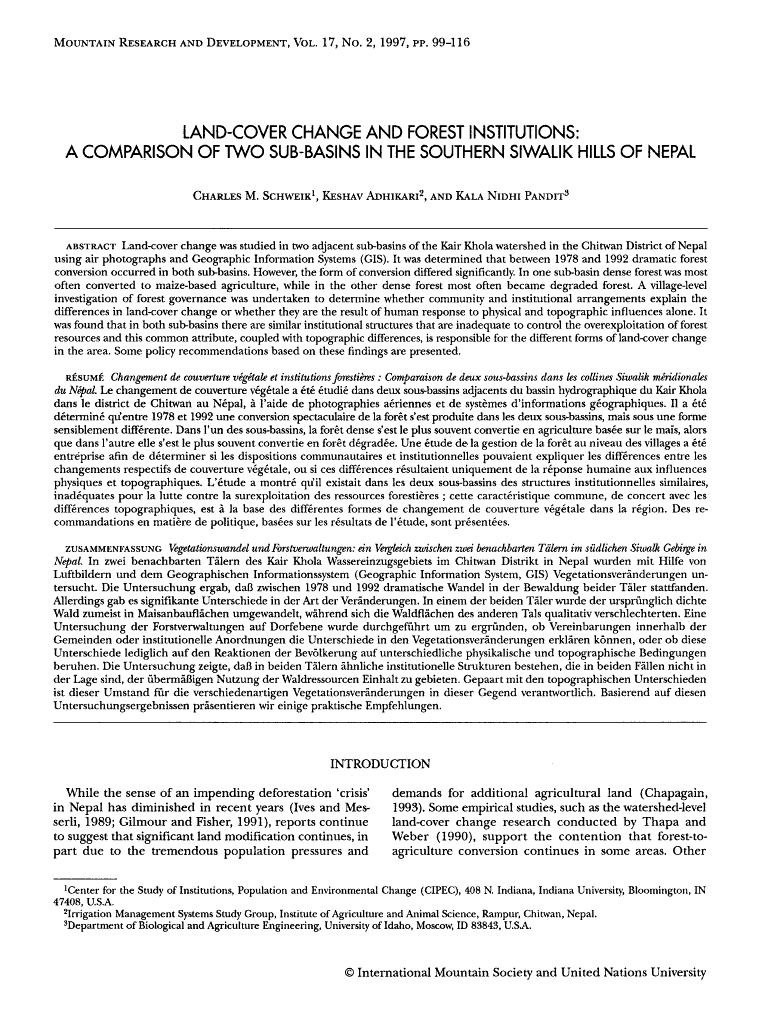
Land-cover change was studied in two adjacent sub-basins of the Kair Khola watershed in the Chitwan District of Nepal using air photographs and Geographic Information Systems (GIS). It was determined that between 1978 and 1992 dramatic forest conversion occurred in both sub-basins. However, the form of conversion differed significantly. In one sub-basin dense forest was most often converted to maize-based agriculture, while in the other dense forest most often became degraded forest. A village-level investigation of forest governance was undertaken to determine whether community and institutional arrangements explain the differences in land-cover change or whether they are the result of human response to physical and topographic influences alone. It was found that in both sub-basins there are similar institutional structures that are inadequate to control the overexploitation of forest resources and this common attribute, coupled with topographic differences, is responsible for the different forms of land-cover change in the area. Some policy recommendations based on these findings are presented. /